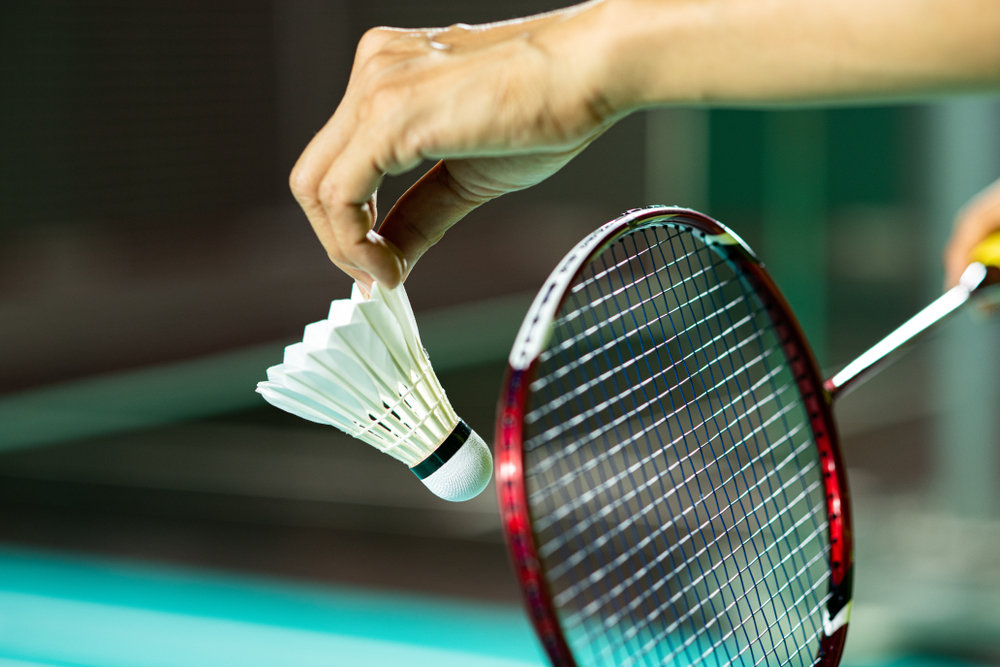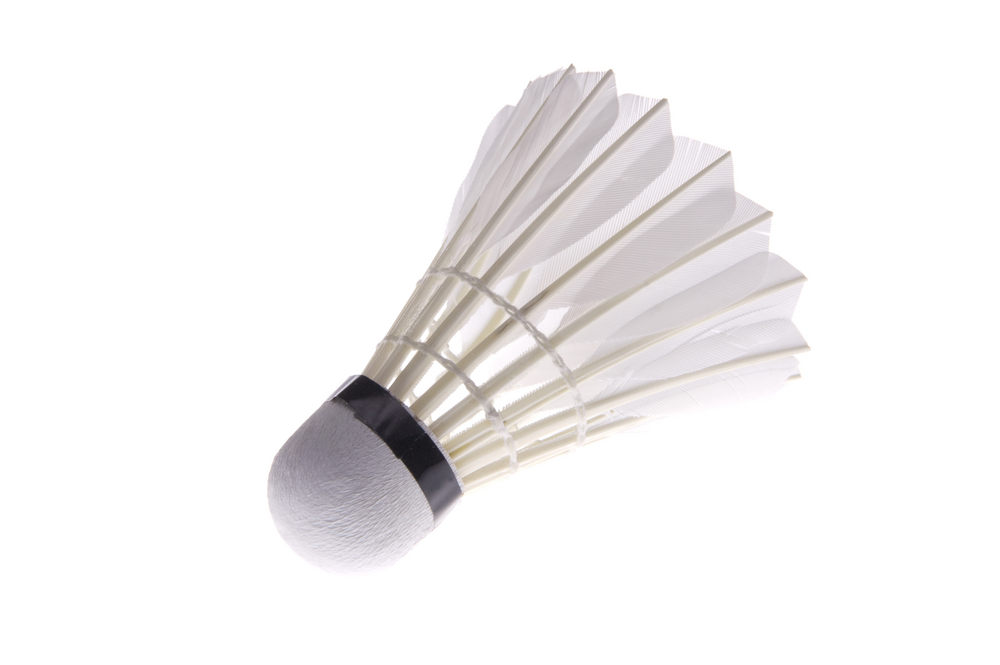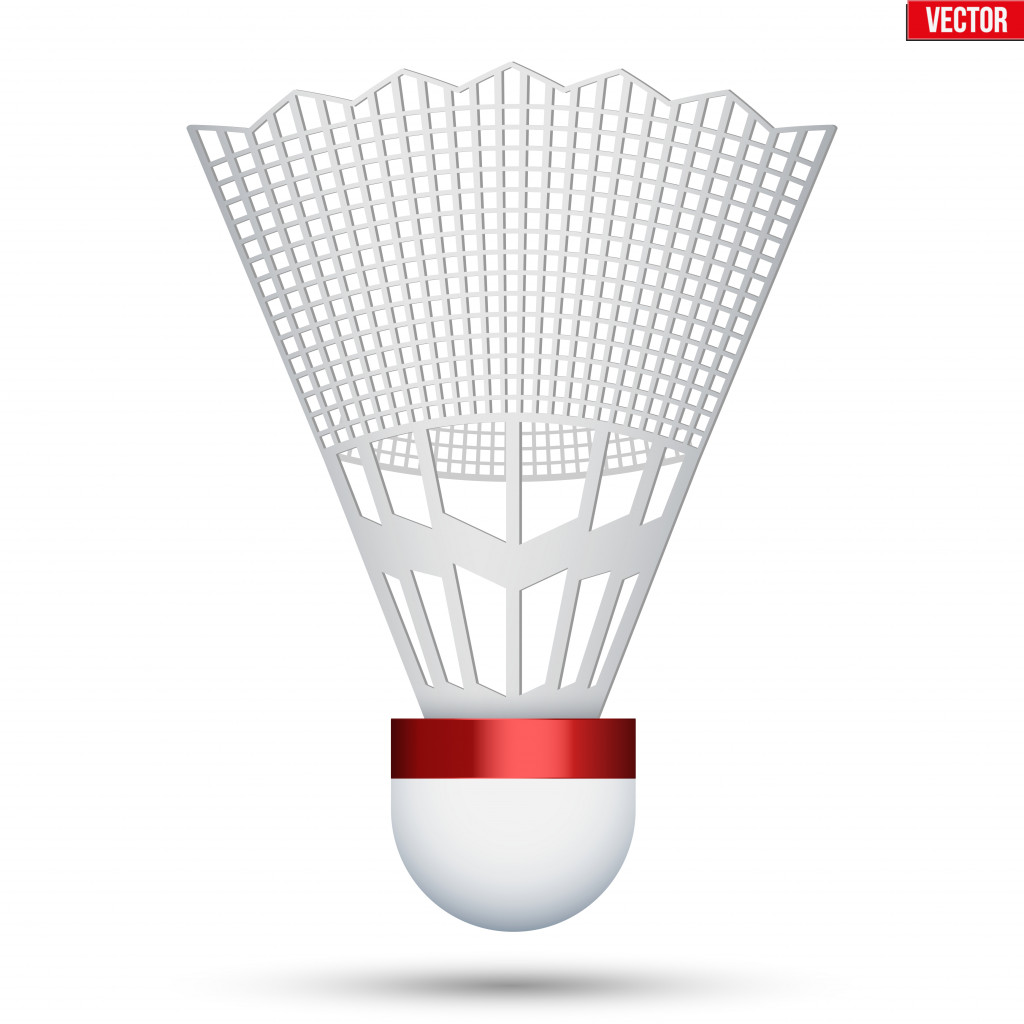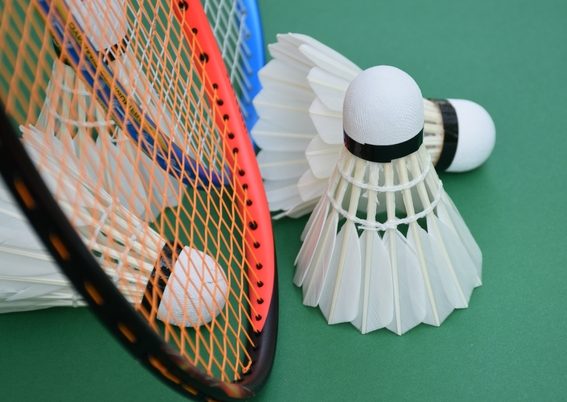Table of Contents (click to expand)
There are three different types of shuttlecocks: feathered, nylon and hybrid. Both feathered and nylon shuttlecocks have different trajectories due to aerodynamics.
Who remembers playing badminton on Sunday mornings or after school? A light breeze could never stop the game, remember? And the type of shuttlecock we used didn’t matter either; any playable shuttlecock was enough to keep the game going. Until the scorching sun burnt our foreheads, of course.
In badminton lingo, a shuttlecock (also called a bird, birdie or shuttle) is a small cork with feathers or plastic attached to it. In the game, it is struck with badminton rackets and volleyed across the net by the players.

Different Types Of Shuttlecocks
There are three different types of shuttlecocks:
Feather Shuttlecocks

A shuttlecock consists of around sixteen goose or duck feathers that overlap and are put into a spherical base made of cork. Players of an intermediate or higher level and those who play badminton professionally typically use these shuttles. These are far simpler to use than nylon shuttles. With the proper knowledge, abilities, and approach, it is possible to produce both net spin (an offensive technique) and slicing (a method to alter the angle of return of the shuttlecock).
When compared to nylon shuttles, feather shuttles have a shorter lifespan than their synthetic counterparts. Because of this, feather shuttles are not suggested for beginners, as using an improper technique can damage the feathers of the shuttlecock and render it useless. It is recommended that the shuttlecocks be stored in an atmosphere that is normally humid so the feathers do not become brittle and dry, which would more rapidly lead to damage.
Feather shuttles have a steeper trajectory (a curved path in which objects move) than nylon shuttles. In recent years, activists for animal rights have asserted that it is inhumane to pluck feathers from the wings of a living goose or duck in order to sell them for recreational purposes.
Nylon Shuttlecocks

The head of this badminton shuttlecock is constructed from a single piece of solid cork. In contrast, the body is constructed out of high-quality nylon, which gives it a reputation for being able to move rapidly, and is praised for being stable and long-lasting.
The nylon shuttlecock is most well known for its flying ability and durability. Because they are not particularly expensive and also last for a very long time, often up to 100 games, before wearing out, these shuttles are primarily utilized by novices and recreational players. The shuttles lose their speed more slowly than feather shuttles, which usually results in a game that moves at a quicker pace and features less control and touch play.
Hybrid Shuttlecocks

These shuttlecocks are made of a combination of plastic and feathers. These shuttles were very recently developed, and their availability is primarily accessible to the United Kingdom. The end feathers of these shuttles are duck or goose feathers, and the shuttle’s frame is made of synthetic material.
These shuttles have higher durability than conventional feather shuttles and higher control than traditional nylon shuttles. Hybrid shuttles are cheaper than most full-feather shuttlecocks, due to the use of cheaper materials and low manufacturing costs.
Now, let’s move on to the concept that allows shuttlecocks to fly—aerodynamics.

The study of how things behave when moving through the air is known as aerodynamics. The branch of science known as aerodynamics is responsible for explaining how an airplane can move through the air.
Everything that moves through the air, from a rocket lifting off to a kite flying in the sky, is impacted by aerodynamics in some way. Even automobiles are subject to the principles of aerodynamics, since air surrounds them. Similar principles apply to the shuttlecocks, allowing them to cut through the wind and rise in the air before gravity finally acts on them.
Also Read: Why Do Some Arrows Have Feathers On The Back?
Aerodynamics Of Shuttlecocks
The shuttlecocks used in badminton can go faster than the balls used in other sports. At the same time, because they have more drag, they slow down much more quickly. The drag force on a shuttlecock significantly affects where it goes. It should be in a range where a skilled player can keep the shuttlecock within the boundaries of the court.

So that the skirt of a synthetic shuttlecock has the same aerodynamic effect as overlapping feathers on a feather shuttlecock, the holes in the net are not all in the same place. We know that feather shuttlecocks and synthetic shuttlecocks are made differently. Because of the differences in how they are made, their aerodynamics and paths are also different.
Both kinds of shuttlecocks (feathered and nylon) have different trajectories of movement. The diagram below can depict this more clearly.

Much more weight lies in the cork than in the skirt, so all shuttlecocks tend to line up with the direction of movement, cork-first. In flight, the shuttlecock is most stable and powerful when it is at a zero angle of attack and aligned with the direction of flow.
A zero angle of attack can be visualized in the diagram given below.

Various studies have concluded that the gaps in the skirt of a shuttlecock lead to an increase in drag. It was also concluded that a synthetic shuttlecock bends more than a feathered shuttlecock when moving at high speeds. Because of this effect, there is less aerodynamic drag.
After knowing more about the intricacies of this enjoyable sport, it will be much easier for all of us to understand and play badminton even better!
Also Read: Why Is There Fuzz On A Tennis Ball?
How well do you understand the article above!

References (click to expand)
- J McLachlan —. Aerodynamics of a Badminton Shuttlecock. worldbadminton.com
- [PDF] A study of badminton shuttlecock aerodynamics. Semantic Scholar
- AERODYNAMIC PROPERTIES OF BADMINTON .... Semantic Scholar
- (2009) A Study of Shuttlecock's Trajectory in Badminton - PMC - NCBI. The National Center for Biotechnology Information
- What Is Aerodynamics? - NASA. The National Aeronautics and Space Administration
